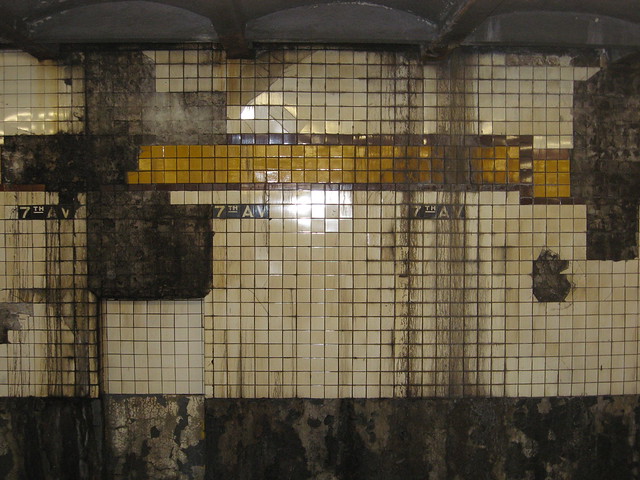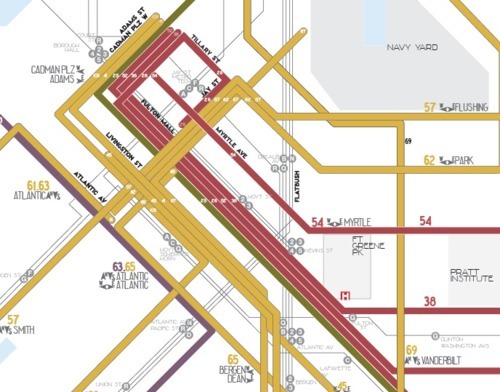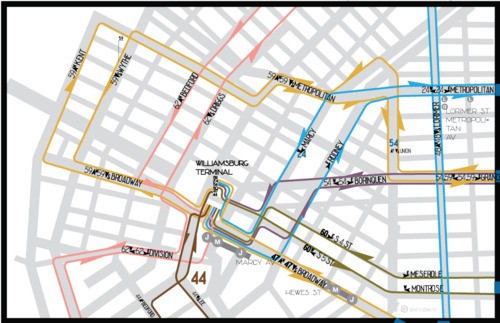
I snapped the above photo three years ago yesterday while waiting for a train at 7th Ave. along the Culver Line. Since 2008, the physical situation at that station has not improved. Although crews have been working hard on the Culver Viaduct, just down the line, the popular Park Slope station that serves F and G train riders has been in a state of constant decay, and it is not alone amongst the system’s stations.
Earlier this week, Transportation Alternatives and the Straphangers Campaign announced a contest. The winner will receive a free 30-day Unlimited Ride MetroCard. All you have to do is snap photos of the subway and bus system. As the group said, the rules are simple. Anyone can submit up to three photos in each of their two categories: Good Transit Scene or Bad Transit Scene.
The categories are, in fact, self explanatory. Good Transit Scenes depict “the life and energy of the subway or bus system. Bad Transit Scenes are akin to the ones above. Those photos are supposed to show “conditions on the subways or buses that need fixing, such as drips or broken lighting.” I can only imagine which category will receive more entries.
The entry form is available on the Straphangers’ website, and the contest runs until 4 p.m. on Friday, June 10. “Public transit is a defining element of New York City life–over 54 percent of New York City households do not own a car and over 70 percent take public transit to commute to work,” Paul Steely White, Executive Director of Transportation Alternatives, said. “This contest will shine a spotlight on an essential aspect of New Yorkers’ everyday lives and highlight the real-world consequences of funding cuts.”
On its own, this contest is a clever idea to get us to think about our surroundings. We’ll see plenty of photographs of great views, trains passing overhead and Arts for Transit installations. But we’ll also see conditions that make us cringe. We’ll see mold-infested stations with crumbling ceilings, staircases with holes in them and rusted metal. We’ll see water-stained walls without tiles and stations covered in trash. We’ll see a system sagging under its own weight.
At the same time though, this contest serves as a reminder that photography in the subway is permitted. The Straphangers had to remind folks of that truth by linking to Section 1050.9(3) of New York City Transit’s Rules of Conduct. Yet, countless people are stopped by cops and MTA employees who believe photography in the subway is not allowed.
Finally, the Straphangers do plan to present these photos to the MTA once they are all compiled. The authority is, of course, well aware of the state of its infrastructure, but the Bad Transit Scenes will serve as a stark reminder of the widespread nature of the decay. Maybe if the right person in Albany sees the photos, they’ll be motivated enough to ask the right questions and produce results. I can dream, at least.










 (Rockaway Park Shuttle)
(Rockaway Park Shuttle)







